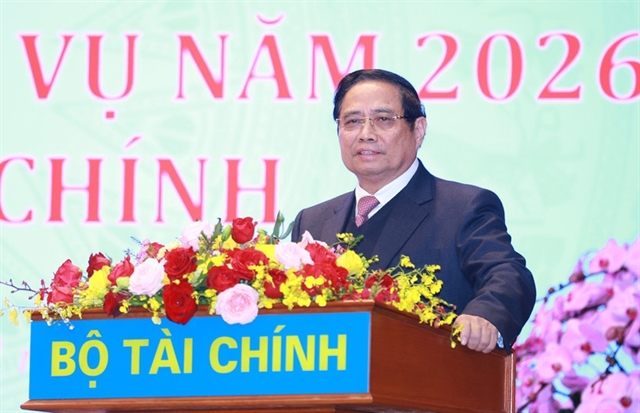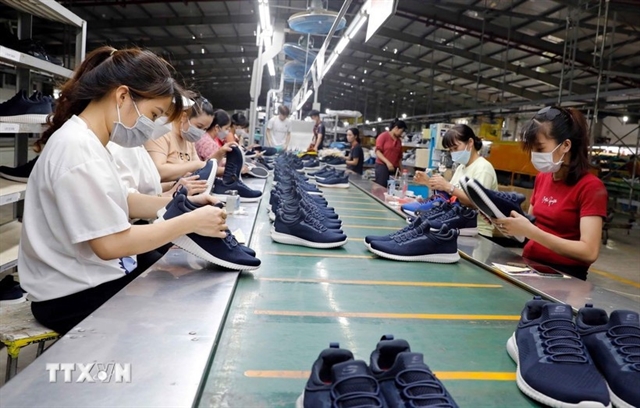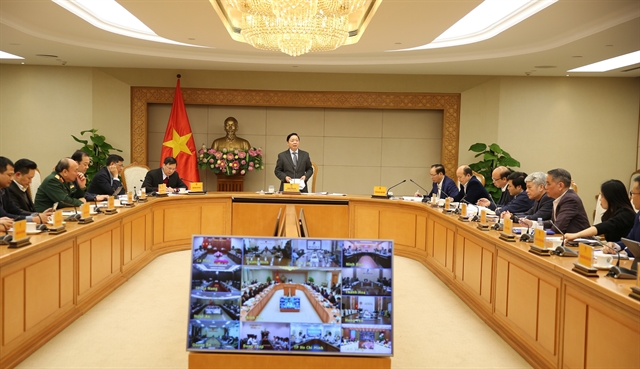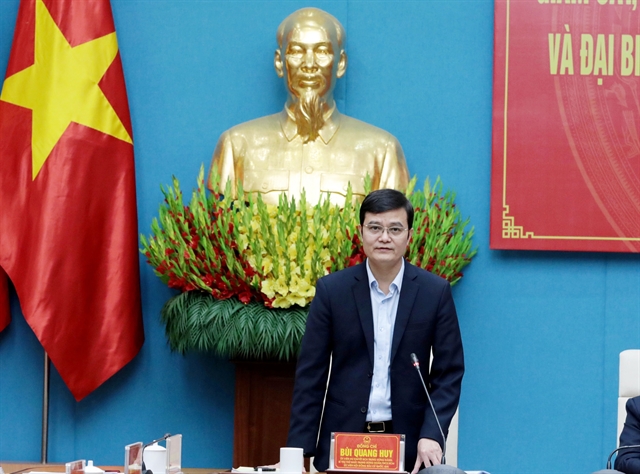 Economy
Economy


|
| Electronic components are produced for export at Youngbag Vietnam Co in Vĩnh Phúc Province. — VNA/VNS Photo Hoàng Hùng |
HÀ NỘI — Vietnamese exporters have encountered many challenges due to rising inflation worldwide, the downward trend in commodity prices and the falling demand in many export markets. In such a difficult context, the firms are urged to diversify export markets besides traditional ones, experts have suggested.
Phạm Thị Ngọc Thủy, Director of the Office of the Research and Development Department of the Private Economy described the diversification of export markets as a matter of survival for businesses in the current context.
However, the firms' traditional markets would not be easily changed in one to two years, she said.
To help exporters find new markets to reduce their dependence on some traditional markets and increase their business opportunities, Thuỷ emphasised the leading role of state agencies, ministries and sectors in reviewing whether new markets had a trade agreement with Việt Nam and drawing up policies and mechanisms that could facilitate Vietnamese exports to these markets besides the firms' trade promotion activities.
Closer cooperation between exporting enterprises and the State agencies and ministries in researching export markets would also be necessary, Thuỷ said.
Economist Đinh Trọng Thịnh said in the past time, some Vietnamese firms have fallen asleep over the victory they had in traditional export markets. This is one of the reasons for their loss of some orders into the hands of rivals, Thịnh said.
Thịnh said he hoped that not only garment exporters but also leather, footwear and wood firms would draw lessons and innovate their production and market access processes.
But businesses needed the companionship of State agencies in expanding their export outlets, especially to those which Việt Nam has signed free trade agreements (FTAs) with, he said.
Businesses also need to enhance their links and connect with trade offices and embassies in countries Việt Nam has inked trade agreements with so that they can boost their exports and enjoy tariff incentives.
This move also helps firms reduce the cost of market access and of finding and capturing partners.
Trần Thanh Hải, deputy director of the Import and Export Department, Ministry of Industry and Trade agreed. He said the efficient exploitation of FTAs would open up great opportunities for local businesses.
Việt Nam had 15 FTAs under operation, Hải said, adding that these FTAs covered most of the major markets and there was still high potential in increasing exports here.
Trade promotion was also necessary to help local businesses find new customers and new business opportunities.
He added that trade promotion activities also played a big role in boosting the chances of local businesses being able to enter foreign markets and grasp the requirements of those markets.
The Ministry of Industry and Trade (MoIT) was focusing on diversifying sources of market information for businesses, especially from Việt Nam trade offices abroad. It had websites providing market research for local businesses to help them find more opportunities abroad.
According to the General Statistics Office (GSO), Việt Nam’s trade turnover reached US$316.65 billion over the past six months of 2023, a decrease of 15.2 per cent compared to the same period last year.
During the period, the country exported $164.45 billion worth of goods to overseas markets, down 12 per cent year-on-year.
This was due to the impact of the global economic slowdown, reduced consumer demand and difficulties in domestic production, the GSO noted.
Export turnover to key markets decreased, including the US (22.6 per cent), South Korea (10.2 per cent), the EU (10 per cent), ASEAN (8.7 per cent), Japan (3.3 per cent), and China (2.2 per cent).
In a bright spot, the country had five groups with an export turnover of $10 billion or more. Of them, electronic products, computers and parts led with $25.21 billion, followed by phones and components ($24.29 billion); machinery, equipment, tools and spare parts ($19.73 billion); textiles ($17.75 billion); and footwear ($10 billion).
To further promote exports, the MoIT has recommended strengthening trade promotion activities targeting new and potential markets such as India, Africa, the Middle East and Eastern Europe as well as markets that are less affected by inflation and have positive growth, such as in ASEAN.
The ministry also suggested a focus on new markets where the middle class is growing, such as the E7 emerging markets (China, India, Russia, Turkey, Mexico, Indonesia, Brazil) and halal markets such as the Middle East, Malaysia and Brunei. — VNS




